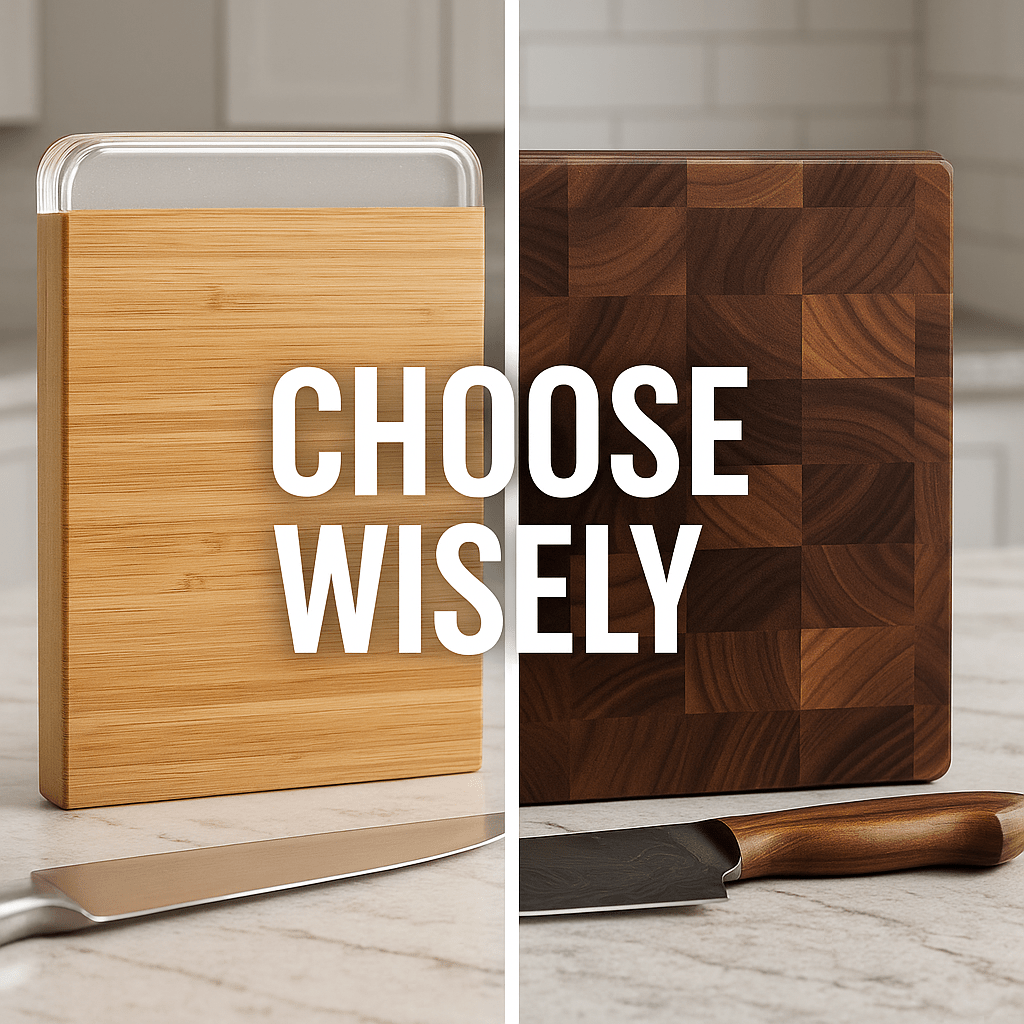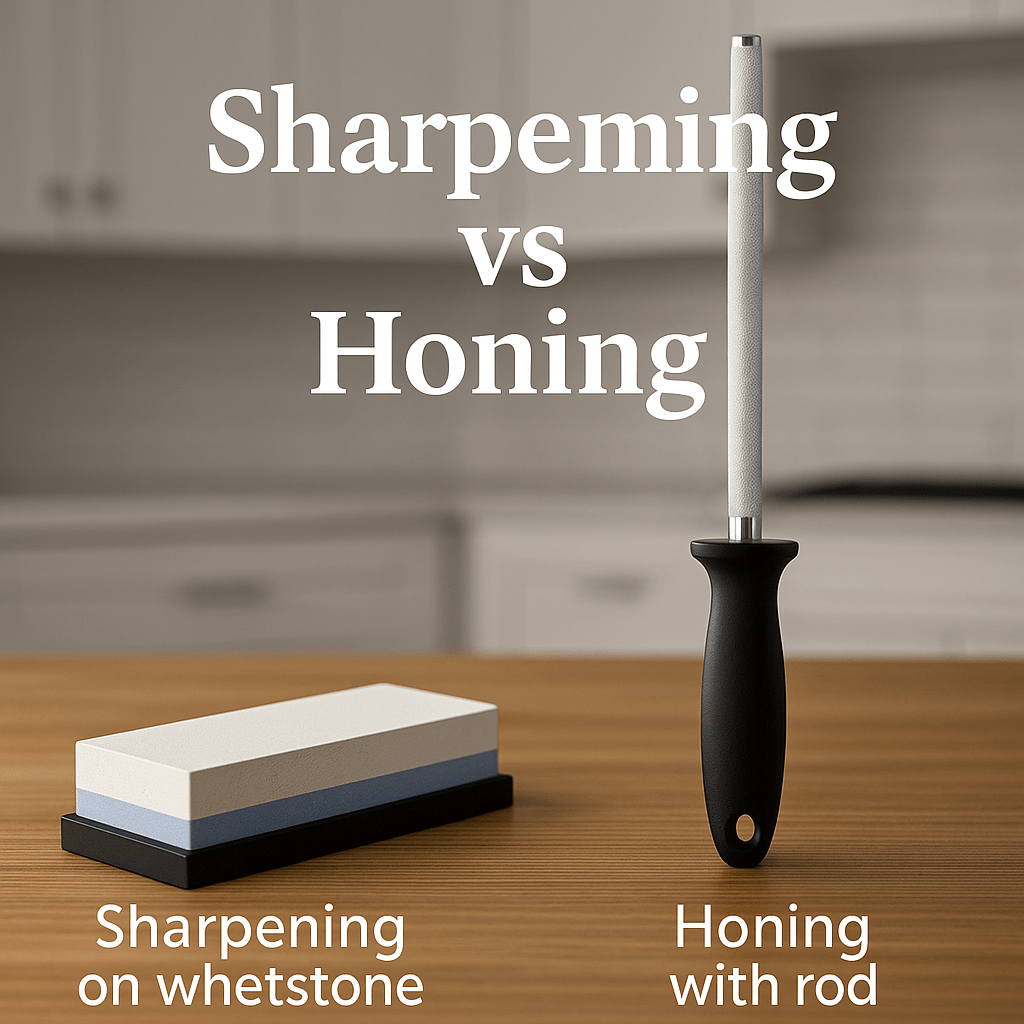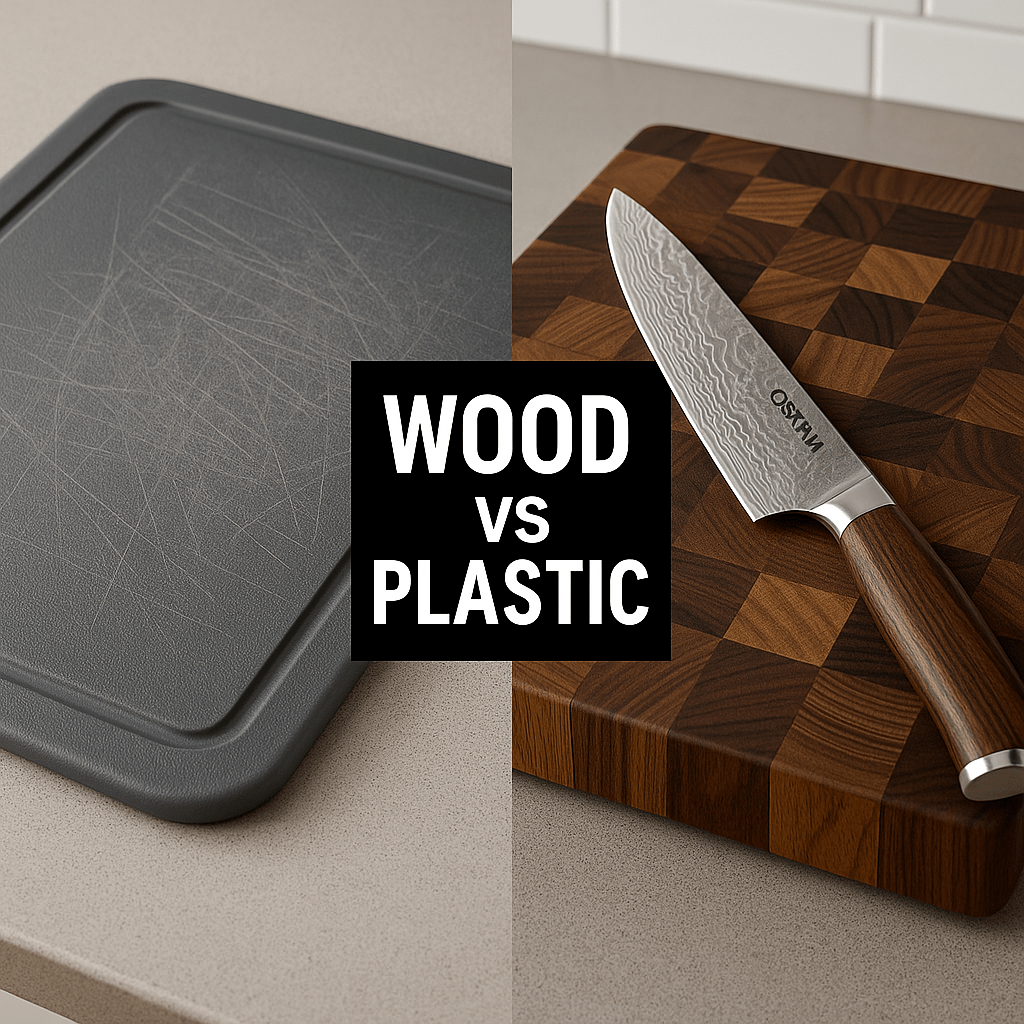
How to Choose the Right Cutting Board for Your Knives
Your kitchen knives are only as good as the surface they meet. While many people invest heavily in high-quality knives, they often overlook one essential companion — the cutting board. The right board can preserve your knife’s sharp edge for years; the wrong one can dull it in weeks. Let’s explore how to choose the perfect board for your OSERM Damascus knives.
1. Why Cutting Board Choice Matters
Every cut, chop, and slice creates friction between your blade and the board. This friction affects how quickly your knife dulls and how precise your cuts remain. A good board absorbs impact, provides stability, and prevents premature wear on the edge.
2. Common Cutting Board Materials Compared
| Material | Pros | Cons |
|---|---|---|
| Wood (End-Grain) | Gentle on blades, self-healing surface, elegant look. | Requires oiling, not dishwasher safe. |
| Bamboo | Eco-friendly, durable, affordable. | Harder than wood, can dull fine edges faster. |
| Plastic (HDPE) | Dishwasher safe, hygienic for meat and fish. | Less aesthetic, surface grooves accumulate bacteria over time. |
| Glass / Marble | Visually appealing, easy to clean. | Very harsh on knives — avoid for all quality blades. |
3. Best Choice for Damascus Knives
For OSERM Damascus knives or any high-carbon VG-10 steel blades, the ideal surface is an end-grain wooden board — such as acacia, maple, or walnut. The “end-grain” structure allows the wood fibers to separate slightly under the blade and then close back up, protecting the edge and maintaining a smooth surface.
It’s the same principle used by professional chefs worldwide — end-grain boards are not only beautiful but also the most knife-friendly option.
4. Proper Board Maintenance
- Oil your wooden board monthly with food-grade mineral oil or beeswax conditioner.
- Never soak wooden boards in water — it causes warping or cracking.
- Use separate boards for raw meat and vegetables to prevent cross-contamination.
- Disinfect occasionally with diluted vinegar or lemon juice, not bleach.
5. How the Board Affects Sharpness
Studies show that cutting boards harder than 80 on the Shore D hardness scale (like glass, marble, or some bamboo) can blunt a knife edge by up to 50% faster than end-grain wood. That’s why professional kitchens around the world still rely on wood — it’s gentle, durable, and timeless.
6. OSERM’s Recommendation
To maximize the longevity of your OSERM Damascus knives, we recommend pairing them with a premium acacia or walnut end-grain board. Not only do they protect your edge, but their natural beauty complements the elegance of your knives — especially when displayed together on a magnetic knife holder or countertop.
7. Common Mistakes to Avoid
- Using glass or marble surfaces — they will destroy your edge quickly.
- Cutting directly on countertops — unhygienic and damaging to both knife and surface.
- Ignoring maintenance — dry boards crack, warp, and become unsanitary.
8. The Perfect Match for OSERM Knives
A knife as finely crafted as an OSERM VG-10 Damascus blade deserves a board that respects its craftsmanship. The board is more than a surface — it’s an essential partner in preserving precision, performance, and the joy of cooking.
Weekly Deal 🔥
Upgrade your kitchen setup with the OSERM Premium End-Grain Acacia Cutting Board — designed for durability, elegance, and ultimate knife protection. Perfect match for OSERM Damascus knives.
Shop OSERM Kitchen Essentials →
You Might Also Like
- Sharpening vs Honing – Why Both Matter for Knife Longevity
- How to Store Your Knives Safely and Stylishly
- Damascus Knife vs Stainless Steel – Which Holds an Edge Longer?
Tags: cutting board for knives, OSERM Damascus, end-grain wood, knife care, acacia board, knife maintenance, kitchen essentials






